Media | Articles
Buying and selling in 2023 is getting increasingly unpredictable
The Hagerty Price Guide Indexes are seven stock market-style indexes that average the values of notable segment movers, or “component” cars. They help provide a broad overview of how different segments of the collector car market are performing.
We’re over a quarter of the way into 2023 and much has happened. With thousands of cars on offer in January in Kissimmee, Florida, and in Scottsdale, Arizona, along with higher-end offerings at February’s Rétromobile in Paris and at Amelia Island, Florida, in March, there is plenty of data to give us a read on the market’s pulse. What’s that pulse telling us? The collector car market is less defined than it has been in a long time.
Although some indexes presented no movement from the last time we discussed them in early January, others reversed previous losses or even gained ground. This illustrates just how nuanced the market is and often how difficult it can be to accurately predict where it is headed. With that in mind, let’s explore how the different segments performed with our last price guide update.
Blue Chip

The end of 2022 was slow for the top of the market, but the beginning of 2023 saw renewed activity following the Scottsdale, Paris, and Amelia Island auctions. The results culminated in a one percent increase to Hagerty’s Blue Chip Index. This bump doesn’t tell the whole story of the top of the market, however.
Marketplace
Buy and sell classics with confidence
Results for component cars were active yet mixed, with seven vehicles posting gains and four of them losing ground. The largest increases were a 14 percent gain by the Mercedes-Benz 300SL Gullwing and a nine percent increase by the Alfa Romeo TZ-2, both at the very top end. The mid-range, meanwhile, saw a six percent gain by the Shelby GT350 and a 7 percent bump by the 1953 Corvette. Increases were tempered a bit by the 1967 Corvette 427/435, which lost 12 percent, and the Rolls-Royce Silver Cloud I, which lost four percent. What we’re seeing at the top of the market is indicative of what we’re seeing elsewhere—results are mixed but there is clearly still steam in the market.
British
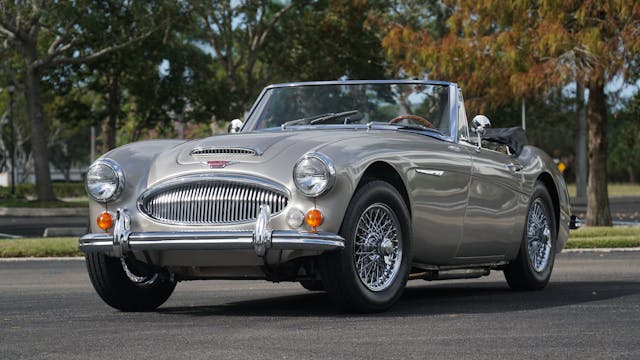
Following the previous quarter’s one percent loss for Hagerty’s British Car Index, the index settled in and stabilized to start 2023. But this doesn’t mean that nothing is happening with British cars, and the segment is far more active than the overall number suggests. In fact, of the 10 component cars, all but one saw a notable change.
Most cars gained value, with the Austin-Healey 3000 leading the way with an eight percent increase, followed by the Series I Jaguar E-Type and Austin-Healey 100 BN2 Le Mans, with five percent and four percent increases, respectively. There was also more modest growth for the Mk I MGB as well as the Triumph TR3A and TR6. That broad range of modest increases, however, was tempered by a 10 percent loss to the Mk II Sunbeam Tiger and a five percent drop to the Jaguar XK 120. As with previous updates, the market for British cars remains strong, yet incredibly nuanced.
Ferrari
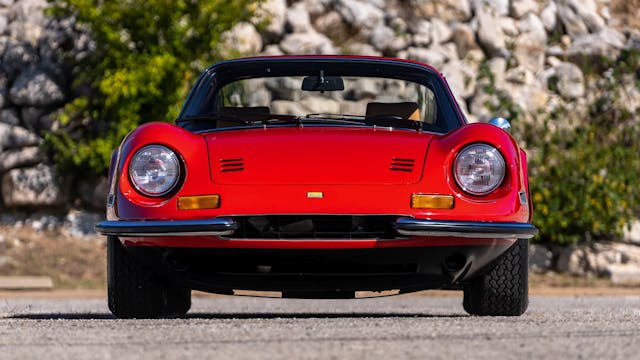
Following a quiet end to 2022, Hagerty’s Ferrari Index posted a mild one percent increase this past quarter, partly thanks to the ramping up of auction season from January to March. Most component cars remained steady, while the ones that did move saw only modest changes.
There were two clear winners, however—the 250 LM gained three percent and the Dino 246 GTS grew five percent. The 250 LM’s increase is due to the model’s first public offering in years, when one hit the block at Artcurial’s Rétromobile auction. Though the car went unsold, had it cut loose at the high bid of €20M ($22M), the total would have signaled an increase. The Dino’s rise comes from a handful of surprisingly strong sales at Amelia Island. What we see in the Ferrari market is similar to the broader Blue Chip market—inconsistent results but with a generally positive outlook.
Muscle Car
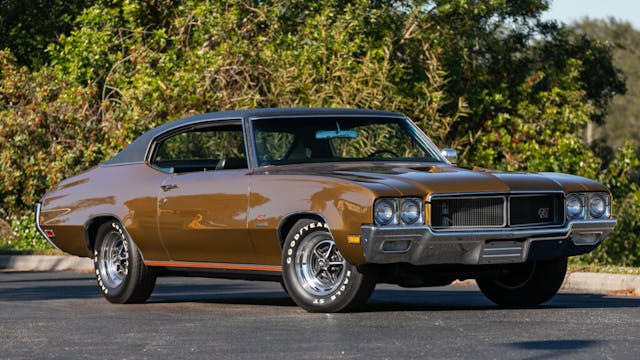
On the heels of a one percent loss to Hagerty’s Muscle Car Index in 2022, results from Scottsdale and Kissimmee in January pushed the index up by two percent to a new all-time high. That said, not everything in the muscle car segment is looking up. Sure, some top-tier muscle cars posted truly impressive increases this past quarter, but the broader market is far more mixed, with some models only regaining value they lost late in 2022 and others continuing to trend downward.
The biggest surprise was the 23 percent increase by the Buick GS 455. These cars have been lagging behind sister cars like the GTO and Olds 4-4-2 but have finally caught up. Another notable gainer was the 1969 Dodge Charger 500, which increased by 20 percent. Other leaders were the 1970 LS6 Chevelle, which climbed 12 percent after a weak showing at the end of 2022, and the Hemi Superbird, which posted a six percent increase. Several Superbirds came up for sale in January—at the risk of oversaturating the market—but the risk paid off, with strong prices almost across the board. Meanwhile, the 1965 Pontiac GTO continued its slide, losing another 14 percent. The 1970 4-4-2 also lost six percent, even as its Buick GS sibling surged. The takeaway here is that there is still strength in the muscle car market, but its many inconsistencies could point toward a rapidly-approaching ceiling.
German
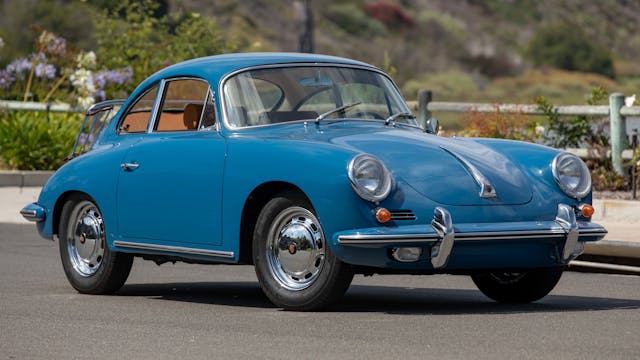
German classics were the clear winner with this price guide update, posting the strongest quarter-over-quarter gain, at three percent, and putting the German Index at a new all-time high. Results here were also less mixed than other market segments, with five component cars gaining value and just one losing.
Standout movers were the Mercedes-Benz 300SL Gullwing’s 14 percent increase, followed by the 280SL’s 12 percent gain. Porsche 356 coupes climbed at a more modest rate of two percent, while the BMW M1 posted a five percent increase. The one loss was the Mercedes-Benz 190SL, with a 10 percent drop. Outside of our component cars, much of the same story seen in the rest of the German market is being played out. Instead of wider gains or losses, movement is targeted and erratic, making the segment’s future much more uncertain than it might seem on the surface.
1950s American
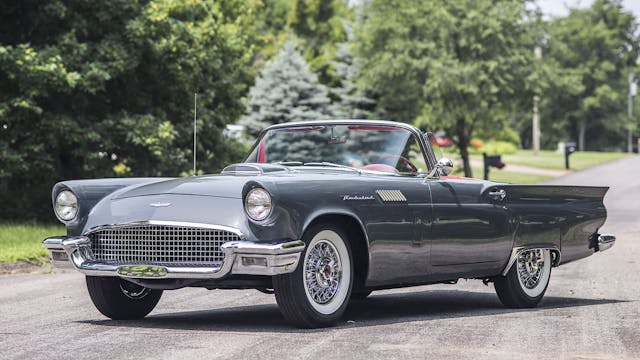
American classics of the 1950s posted another positive quarter, gaining an additional percentage point. As with many of the other indexes, the gain comes as the result of very mixed movement. Following the January auctions in Scottsdale and Kissimmee, however, it is apparent that there is still room to grow for some vehicles.
The 1957 Ford Thunderbird rose by an impressive 13 percent, while the less discussed Hudson Hornet gained 10 percent. Notable losses in this segment were the elegant Continental Mark II at a 10 percent loss and the Ford Fairlane 500 Skyliner, which softened by seven percent. With seven component cars gaining value and six losing, there is nothing clear about the future direction of 1950s American cars.
Affordable Classics
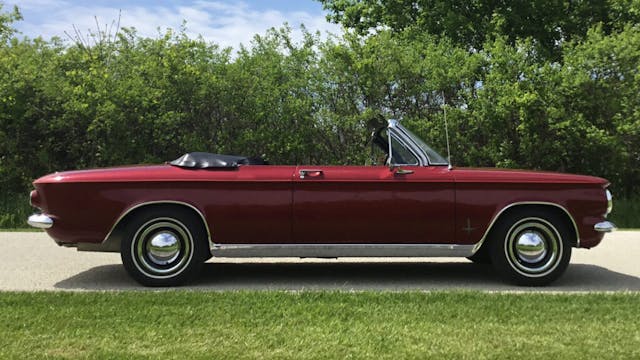
For the second update in a row, Hagerty’s Affordable Classics Index has posted no appreciable movement, proving that last quarter’s pause is no fluke. Though the term “affordable” in the context of the component cars has changed, the index’s rise since 2017 perfectly outlines just how much the market has expanded, especially since 2020.
Surprisingly, many component cars posted modest gains. From the Corvair Monza’s five percent bump to the Studebaker Lark’s nine percent increase, eight of the 13 component cars saw growth. However, the Datsun 240Z’s slide continued, with a four percent loss, and the 1967 Volkswagen Beetle decreased by eight percent. These two decreases sucked away any forward momentum. Results are too varied to confidently predict a leveling off at the lower end of the market, but continued performance is hard to ignore.
***
Check out the Hagerty Media homepage so you don’t miss a single story, or better yet, bookmark it. To get our best stories delivered right to your inbox, subscribe to our newsletters.
Via Hagerty Insider
















I think the 250 LM no-sale is not relevant and nothing can be discerned from it. Is there any proof that the high “bid” was anything but a chandelier bid by the auction house, trying to coax the car towards “real” money? Or if the bidder was a friend of either auction house or seller, engaging in similar tactics with prior knowledge of the reserve price? Unless a sale actually happens, the high bid is mostly irrelevant.
What are the 50s “component cars”?
Post Pixar “Cars” Hudson Hornets have new life in pop culture. But some 50s cars (Vettes, Tbirds, tri 5) have always been pricier and more in demand. I’m not sure the person shopping a 50s Hornet 4 door sedan is impacting the demand/values of 55 Vettes…
Fairlane 500 and Continental Mark II I would contend are yesterday’s darling, that is to say interest in them is narrowing with most of them being museum/collection trophies. 56 Oldsmobiles aren’t perhaps seen as high on “the ladder” but I see people driving really nice ones to shows still.
I guess I’m not convinced a lumped group of “50s American” works… 50s American sport, 50s American prestige (Lincolns, Caddy, Imperial, Packard) vs. mass market models I suspect the market behaves differently. I’m not sure you can even have the tri-fives in with the rest of the mass market and also feel the data isn’t corrupted?
I could of course be entirely wrong.
What does “component car” mean?
Is it time to create a new index for Japanese collectibles? The 240Z seems out of place in the affordable category.
Agreed. Though soon there will need to be a separate category for 70s/80s vs 90s Japanese